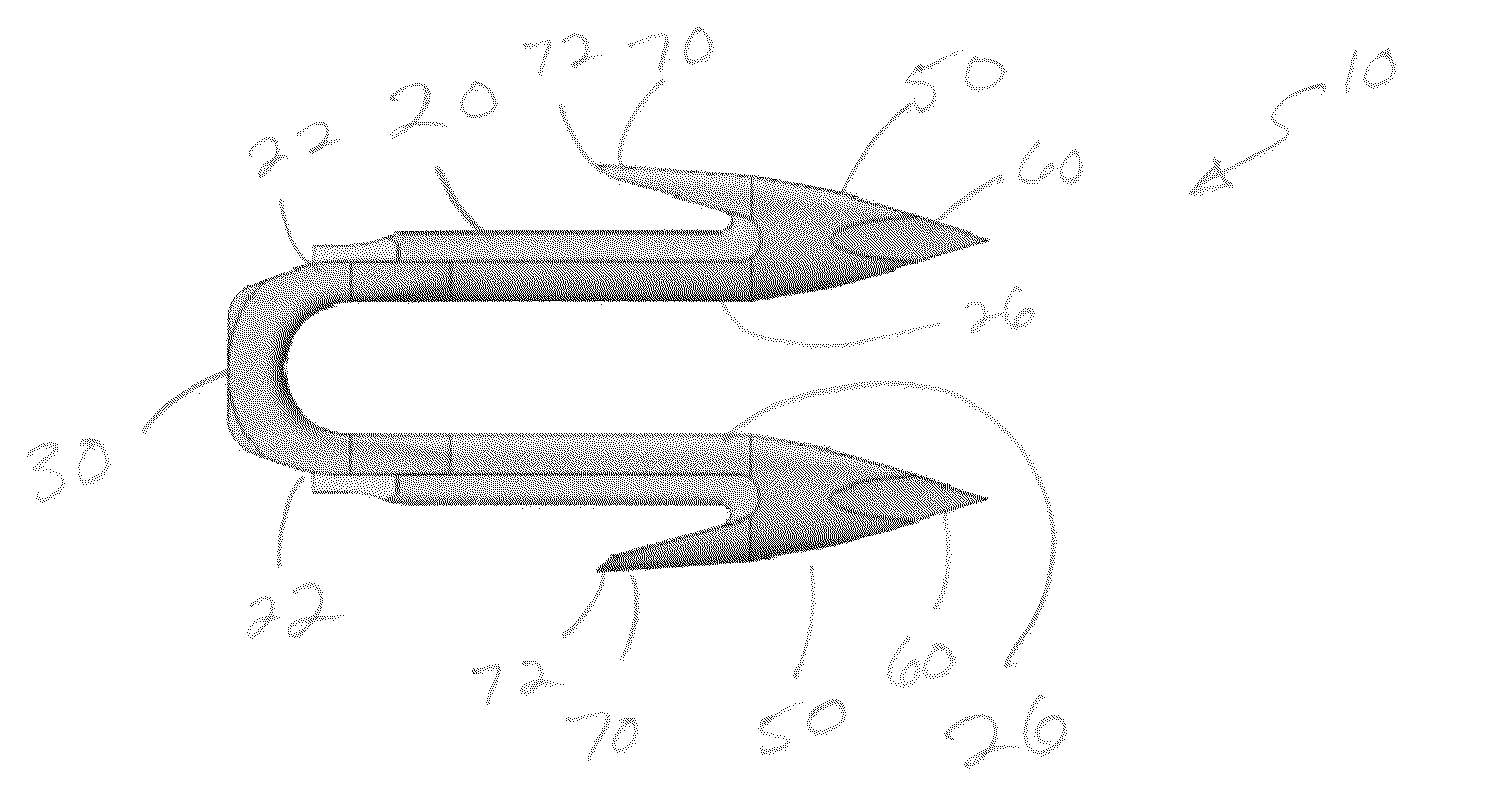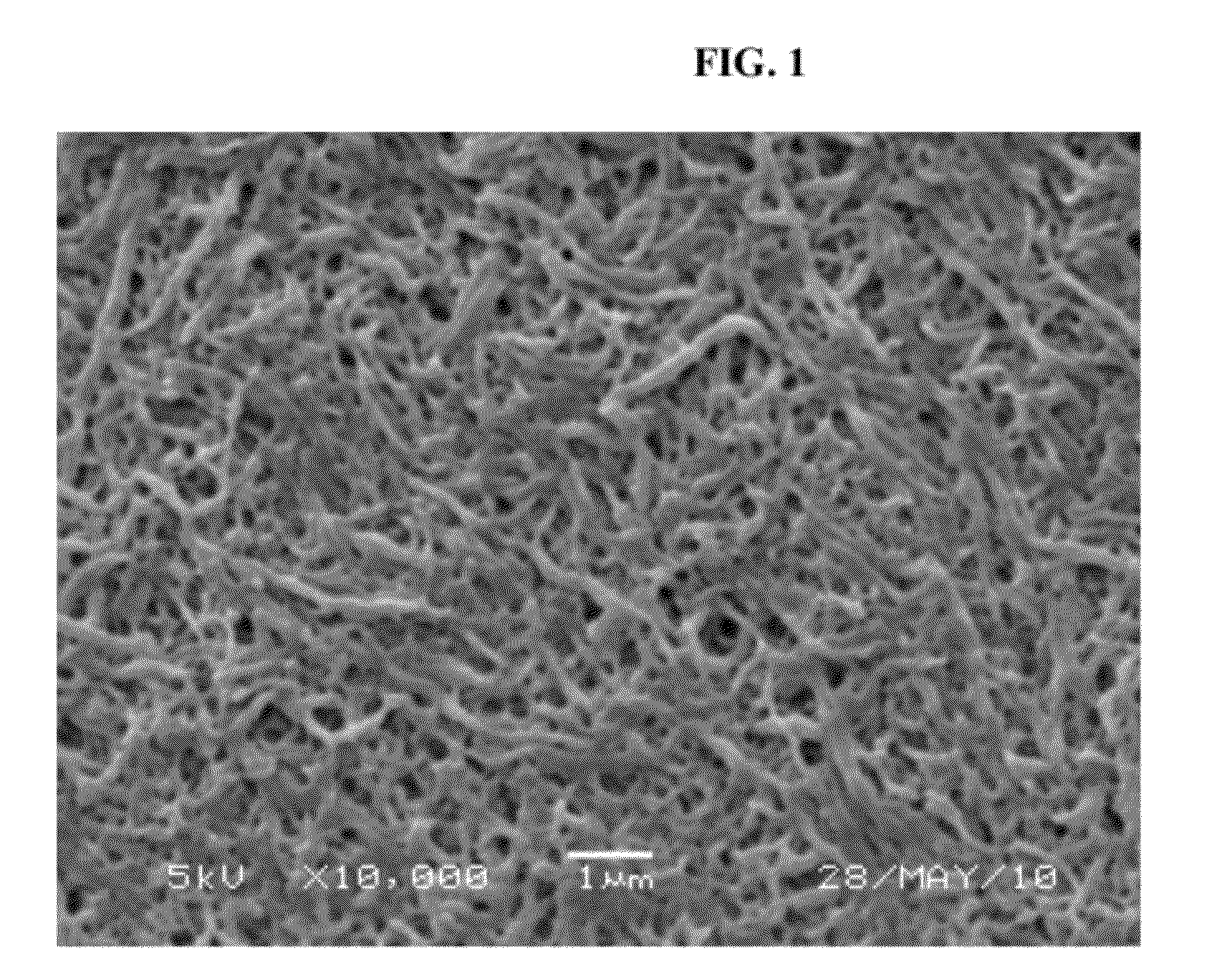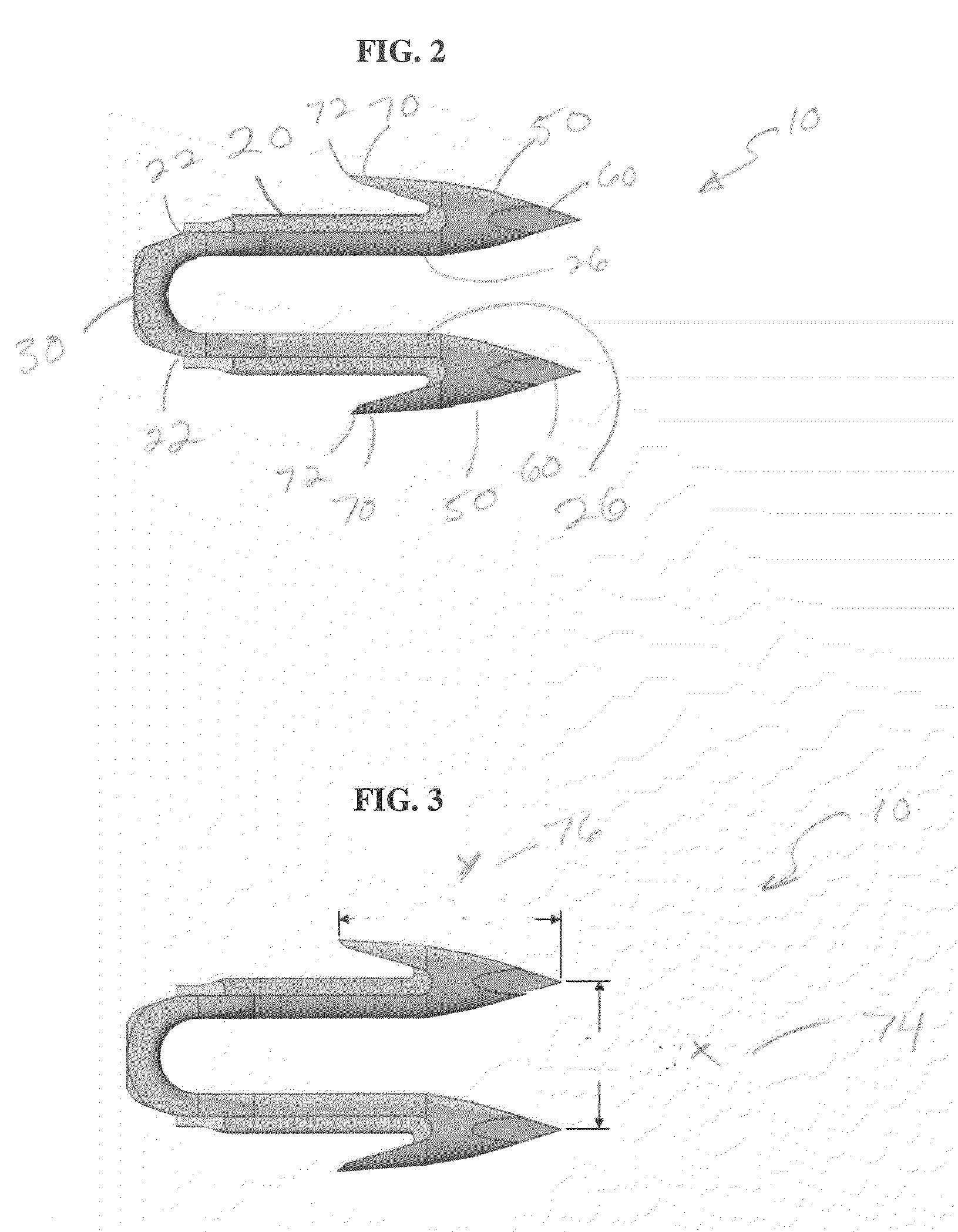Bioabsorbable Polymeric Compositions, Processing Methods, and Medical Devices Therefrom
a bioabsorbable polymer and composition technology, applied in the field of bioabsorbable polymer blends, can solve the problems of inability to completely eliminate residual stress in injection molded parts. , to achieve the effect of superior mechanical properties, high stiffness and column strength, and superior breaking strength retention
- Summary
- Abstract
- Description
- Claims
- Application Information
AI Technical Summary
Benefits of technology
Problems solved by technology
Method used
Image
Examples
example 1
Synthesis of Poly(L(−)-lactide)
[0099]Into a suitable 15-gallon stainless steel oil jacketed reactor equipped with agitation, 25.0 kg of L(−)-lactide was added along with 58.77 g of dodecanol and 4.38 mL of a 0.33M solution of stannous octoate in toluene. The reactor was closed and a purging cycle, along with agitation at a rotational speed of 12 RPM in an upward direction, was initiated. The reactor was evacuated to pressures less than 200 mTorr followed by the introduction of nitrogen gas. The cycle was repeated several times to ensure a dry atmosphere.
[0100]At the end of the final introduction of nitrogen, the pressure was adjusted to be slightly above one atmosphere. The vessel was heated at a rate of 180° C. per hour until the oil temperature reached approximately 130° C. The vessel was held at 130° C. until the monomer was completely melted and the batch temperature reached 110° C. At this point the agitation rotation was switched to the downward direction. When the batch tempe...
example 2
Synthesis of 85 / 15 Poly(L(−)-lactide-co-glycolide)
[0105]Into a suitable 15-gallon stainless steel oil jacketed reactor equipped with agitation, 43.778 kg of L(−)-lactide and 6.222 kg of glycolide were added along with 121.07 g of dodecanol and 9.02 mL of a 0.33M solution of stannous octoate in toluene. The reactor was closed and a purging cycle, along with agitation at a rotational speed of 12 RPM in an upward direction, was initiated. The reactor was evacuated to pressures less than 200 mTorr followed by the introduction of nitrogen gas. The cycle was repeated several times to ensure a dry atmosphere.
[0106]At the end of the final introduction of nitrogen, the pressure was adjusted to be slightly above one atmosphere. The vessel was heated at a rate of 180° C. per hour until the oil temperature reached approximately 130° C.
[0107]The vessel was held at 130° C. until the monomer was completely melted and the batch temperature reached 110° C. At this point the agitation rotation was sw...
example 3
Synthesis of 75 / 25 Poly(L(−)-lactide-co-glycolide)
[0112]Into a suitable 15-gallon stainless steel oil-jacketed reactor equipped with agitation, 19.709 kg of L(−)-lactide and 5.291 kg of glycolide were added along with 61.77 g of dodecanol and 4.60 mL of a 0.33M solution of stannous octoate in toluene. The reactor was closed and a purging cycle, along with agitation at a rotational speed of 12 RPM in an upward direction, was initiated. The reactor was evacuated to pressures less than 200 mTorr followed by the introduction of nitrogen gas. The cycle was repeated several times to ensure a dry atmosphere.
[0113]At the end of the final introduction of nitrogen, the pressure was adjusted to be slightly above one atmosphere. The vessel was heated at a rate of 180° C. per hour until the oil temperature reached approximately 130° C. The vessel was held at 130° C. until the monomer was completely melted and the batch temperature reached 110° C. At this point the agitation rotation was switched...
PUM
| Property | Measurement | Unit |
|---|---|---|
| Fraction | aaaaa | aaaaa |
| Time | aaaaa | aaaaa |
| Time | aaaaa | aaaaa |
Abstract
Description
Claims
Application Information
 Login to View More
Login to View More - R&D
- Intellectual Property
- Life Sciences
- Materials
- Tech Scout
- Unparalleled Data Quality
- Higher Quality Content
- 60% Fewer Hallucinations
Browse by: Latest US Patents, China's latest patents, Technical Efficacy Thesaurus, Application Domain, Technology Topic, Popular Technical Reports.
© 2025 PatSnap. All rights reserved.Legal|Privacy policy|Modern Slavery Act Transparency Statement|Sitemap|About US| Contact US: help@patsnap.com



